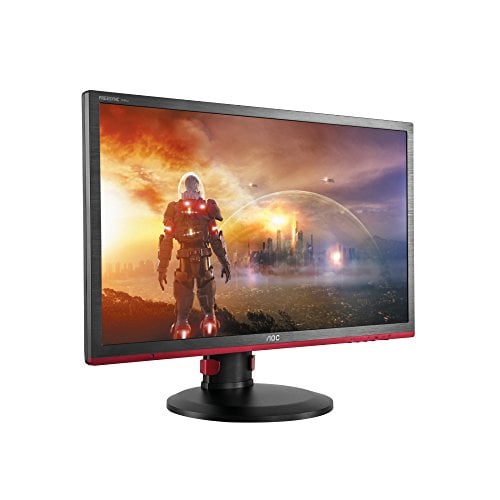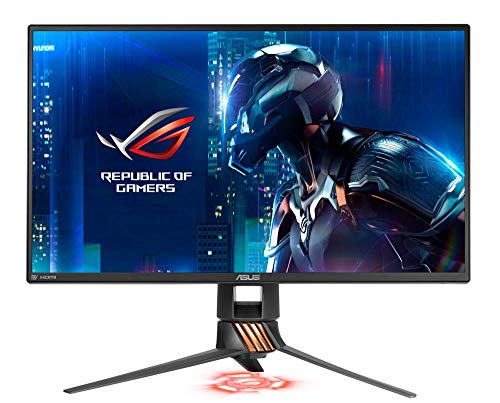TN vs VA vs IPS: Which Type Of Monitor Is The Best
Graphical prowess is always going upwards in video games. So is the competitive aspect of video games. If you’re the type of person who generally enjoys gaming, you’ll benefit from a great display. Gaming monitors have been on the rise for a while now. That’s because of higher refresh rates, lower response times and anti-screen tearing technology. Still, the core of a great monitor is the panel used inside.
Typically we see TN, IPS and VA panels in these gaming monitors. So this article should serve as a guide to what benefits each provides and where they cut corners. Hopefully, by the end of this, you should be assured of which one is better for you.

IPS Panels
You might be familiar with the term IPS already. That’s because smartphones utilize these panels as well. IPS (In-plane switching) displays deliver in areas of color reproduction and overall quality. Displays that use this panel usually show off the highest contrast. Compared to TN and VA, IPS panels are brighter as well.
Another great benefit they provide is in viewing angles. No matter from which angle you look at the screen, it will always be color accurate and there is little to no blue shift. Blueshift is a slight change in the color which happens when you look at a display off axis. Needless to say, IPS panels rarely suffer from this.
Our Recommendations
| # | Preview | Name | Screen Size | Resolution | Refresh Rate | Panel Type | Response Time | Purchase |
|---|---|---|---|---|---|---|---|---|
| 1 |  | ASUS ROG Swift PG279Q | 27' | WQHD (2560 x 1440) | 144Hz | IPS | 4ms | Check Price |
| 2 |  | Acer Predator XB321HK | 32' | 4K UHD (3840 x 2160) | 60Hz | IPS | 4ms | Check Price |
| 3 |  | LG 24MP59G | 24' | FHD (1920 x 1080) | 75Hz | IPS | 5ms | Check Price |
| 4 |  | AOC G2460PF | 24' | FHD (1920 x 1080) | 144Hz | TN | 1ms | Check Price |
| 5 |  | ASUS ROG Swift PG258Q | 25' (24.5' viewable) | FHD (1920 x 1080) | 240Hz | IPS | 1ms | Check Price |
| # | 1 |
| Preview |  |
| Name | ASUS ROG Swift PG279Q |
| Screen Size | 27' |
| Resolution | WQHD (2560 x 1440) |
| Refresh Rate | 144Hz |
| Panel Type | IPS |
| Response Time | 4ms |
| Purchase | Check Price |
| # | 2 |
| Preview |  |
| Name | Acer Predator XB321HK |
| Screen Size | 32' |
| Resolution | 4K UHD (3840 x 2160) |
| Refresh Rate | 60Hz |
| Panel Type | IPS |
| Response Time | 4ms |
| Purchase | Check Price |
| # | 3 |
| Preview |  |
| Name | LG 24MP59G |
| Screen Size | 24' |
| Resolution | FHD (1920 x 1080) |
| Refresh Rate | 75Hz |
| Panel Type | IPS |
| Response Time | 5ms |
| Purchase | Check Price |
| # | 4 |
| Preview |  |
| Name | AOC G2460PF |
| Screen Size | 24' |
| Resolution | FHD (1920 x 1080) |
| Refresh Rate | 144Hz |
| Panel Type | TN |
| Response Time | 1ms |
| Purchase | Check Price |
| # | 5 |
| Preview |  |
| Name | ASUS ROG Swift PG258Q |
| Screen Size | 25' (24.5' viewable) |
| Resolution | FHD (1920 x 1080) |
| Refresh Rate | 240Hz |
| Panel Type | IPS |
| Response Time | 1ms |
| Purchase | Check Price |
Last Update on 2025-12-29 at 14:24 / Affiliate links / Images from Amazon Product Advertising API
Overall quality is also much better on IPS panels. IPS panels rarely run into issues such as backlight bleed or ghosting. Still, they do have a few drawbacks you might care about. First off, they are limited to a 4ms response time. That’s still not half bad even for competitive gaming but definitely a tad bit more than TN panels.
The real drawback here might be in performance. 60Hz is the typical refresh rate on an affordable IPS monitor. That doesn’t mean faster IPS displays don’t exist. But compared to TN panels they are a bit more expensive.
TN Panels

TN (Twisted Nematic) panels are the best performers out of all these three. A lot of people write off TN panels as inferior panels when compared to IPS. But TN definitely has its advantages. The main one being performance.
TN panels have the lowest response times. Most of these displays are coupled with a 1ms response time. Pair that with a 144Hz refresh rate and you’ve got a super-fluid display. This is extremely comparing if we factor in the lower cost TN displays represent.
The drawbacks are in overall quality. Let’s get one thing out of the way. TN is much better these days in terms of color reproduction and contrast. To be perfectly honest, it’s good enough for most people. It’s just that when you compare them to IPS, they don’t have good viewing angles and contrast. But there’s also the price to consider in this comparison.
VA Panels
VA (Vertical Alignment) panels try to provide a middle ground between TN and IPS. Compared to TN panels they have much better contrast and have more brightness. They can also perform at the same standard that TN delivers at. So at first glance, VA panels might seem like the best option for a lot of people.

The problem here is they still aren’t good enough as IPS. Also, TN delivers the same performance at a lower cost. VA panels typically cost more. But if they’re cheaper than IPS than they must be a good middle ground right? Well, that’s not true these days. That’s because IPS displays have also gotten a bit cheaper. Unless you have a very fixed budget or going for a very specific monitor for other reasons (size, refresh rate, design) then VA isn’t as compelling as it might look at first glance.
Final Thoughts
All three of these panel types are very different from each other. If you want the best image quality possible, then IPS is the way to go. With prices dropping gradually, you might even find a higher refresh rate IPS monitor at a decent price. If you want the best possible performance at a lower cost, TN is still a great option. However, you do sacrifice viewing angles and image quality, at least compared to IPS. Finally, VA is still a solid option, but you can find an IPS Panel around the same price if you look around. If you do, VA doesn’t make a lot of sense unless you have a very specific monitor in mind.





